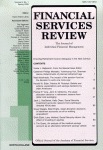The Impact of Inflation on ROE, Growth and Stock Prices
DOI:
https://doi.org/10.1016/S1057-0810(97)90028-7Abstract
Using the constant growth dividend discount model (DDM), it can be shown that the critical factor which determines whether common stocks will be able to be an inflation hedge is the growth rate of dividends. In turn, the growth of dividends is mainly impacted by the aggregate return on equity (ROE). Using the DuPont formula, it is clear that the main variable that drives the aggregate ROE in an inflationary environment is the profit margin.
Following from this background, this article updates and extends an earlier analysis that involves an analysis ofROE and its componentsfor the 40-yearperiod 1956-1995. The analysis demonstrates that the aggregate ROE is currently at about the same level as in the 1960's, but the components have changed, that is, there has been a decline in total asset turnover and profit margin, but a significant increase in financial leverage that has compensated for the declines in turnover and profit margin. It is further shown that there have been periods of high and low inflation since 1956, and the negative impact of inflation of the implied growth rate is confirmed, which helps explain why investigators find consistent empirical results that common stocks are poor inflation hedges.
Downloads
Published
How to Cite
Issue
Section
License
Copyright (c) 1997 JAI Press Inc.

This work is licensed under a Creative Commons Attribution-NonCommercial 4.0 International License.
Author(s) retain copyright and grant the Journal right of first publication with the work simultaneously licensed under a Creative Commons Attribution-NonCommercial 4.0 International License that allows to share the work with an acknowledgment of the work's authorship and initial publication in this Journal.
This license allows the author to remix, tweak, and build upon the original work non-commercially. The new work(s) must be non-commercial and acknowledge the original work.


